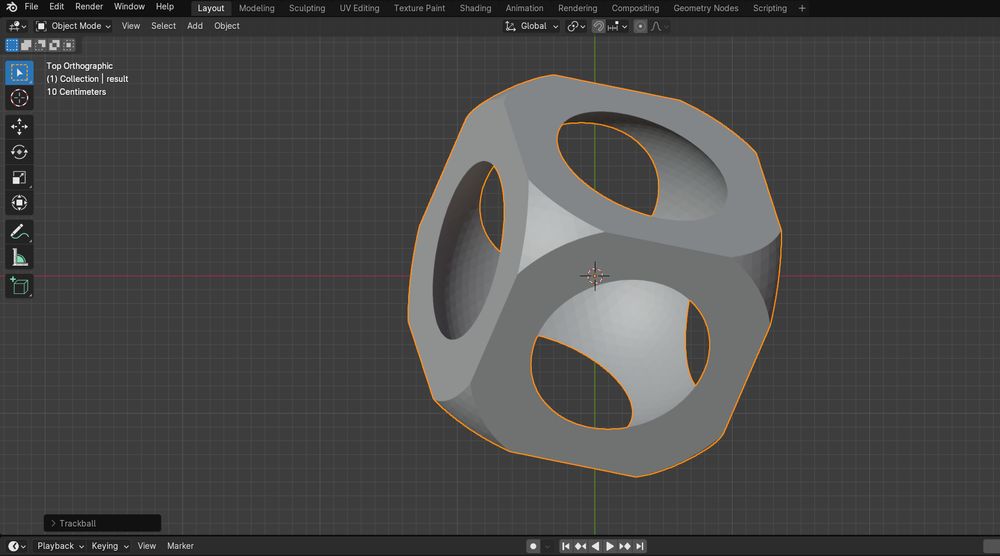
https://www.cs.cmu.edu/~kmcrane/
youtu.be/-gp7AbYD9NI?...
Get all the details on Hossein Baktash’s page here: hbaktash.github.io

youtu.be/-gp7AbYD9NI?...
Get all the details on Hossein Baktash’s page here: hbaktash.github.io
But “fair” really just means you get the frequencies you expect (say, 1/4, 1/4 & 1/2)
We can now design fair dice with any frequencies—and any shape! 🐉
hbaktash.github.io/projects/put...
But “fair” really just means you get the frequencies you expect (say, 1/4, 1/4 & 1/2)
We can now design fair dice with any frequencies—and any shape! 🐉
hbaktash.github.io/projects/put...
youtube.com/shorts/jD0ag...
🎲 🎥 🐉 🪙

youtube.com/shorts/jD0ag...
🎲 🎥 🐉 🪙
It converts Markdown and LaTeX to Unicode that can be used in “tweets”, and automatically splits long threads. Try it out!
keenancrane.github.io/LaTweet/

It converts Markdown and LaTeX to Unicode that can be used in “tweets”, and automatically splits long threads. Try it out!
keenancrane.github.io/LaTweet/
In short: we emphasize how autoencoders are implemented—but not always what they represent (and some of the implications of that representation).🧵

In short: we emphasize how autoencoders are implemented—but not always what they represent (and some of the implications of that representation).🧵
The whole idea of an autoencoder is that you complete a round trip and seek cycle consistency—why lay out the network linearly?

The whole idea of an autoencoder is that you complete a round trip and seek cycle consistency—why lay out the network linearly?
But I do think the first bar should be checking whether you can recover consistent geometry from video—not whether it makes accurate predictions of physics.

But I do think the first bar should be checking whether you can recover consistent geometry from video—not whether it makes accurate predictions of physics.
Yousuf Soliman and I found a better way to compute log maps w/ fast short-time heat flow in "The Affine Heat Method" presented @ SGP2025 today! 🧵
Stay tuned for more…👣

Stay tuned for more…👣
Basically we can turn arbitrary objects into fair dice, or make dice which capture the statistics of other objects—like several coin flips.
Basically we can turn arbitrary objects into fair dice, or make dice which capture the statistics of other objects—like several coin flips.
github.com/etcorman/Rec...
(C++ version is still in the works…)

github.com/etcorman/Rec...
(C++ version is still in the works…)
Amazingly, no past quad meshing method could guarantee 90° angles under refinement—until now. #RSP
Amazingly, no past quad meshing method could guarantee 90° angles under refinement—until now. #RSP
Jiří is a world expert in space curves, and one of the core contributors to Penrose (penrose.cs.cmu.edu). Check out his beautiful work here: minarcik.com
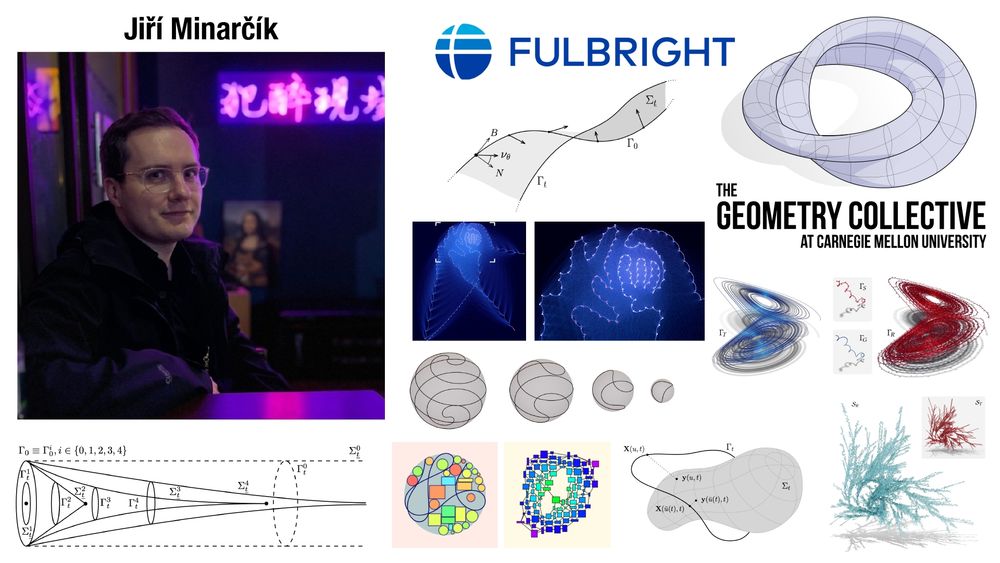
Jiří is a world expert in space curves, and one of the core contributors to Penrose (penrose.cs.cmu.edu). Check out his beautiful work here: minarcik.com
You may or may not be aware of the controversy around the next #SIGGRAPHAsia location, summarized here www.cs.toronto.edu/~jacobson/we...
If you're concerned consider signing this letter docs.google.com/document/d/1...
via this form
docs.google.com/forms/d/e/1F...

You may or may not be aware of the controversy around the next #SIGGRAPHAsia location, summarized here www.cs.toronto.edu/~jacobson/we...
If you're concerned consider signing this letter docs.google.com/document/d/1...
via this form
docs.google.com/forms/d/e/1F...
Such meshes are useful for everything from retopology, to microfluidic simulation, to textile design, to architectural geometry.
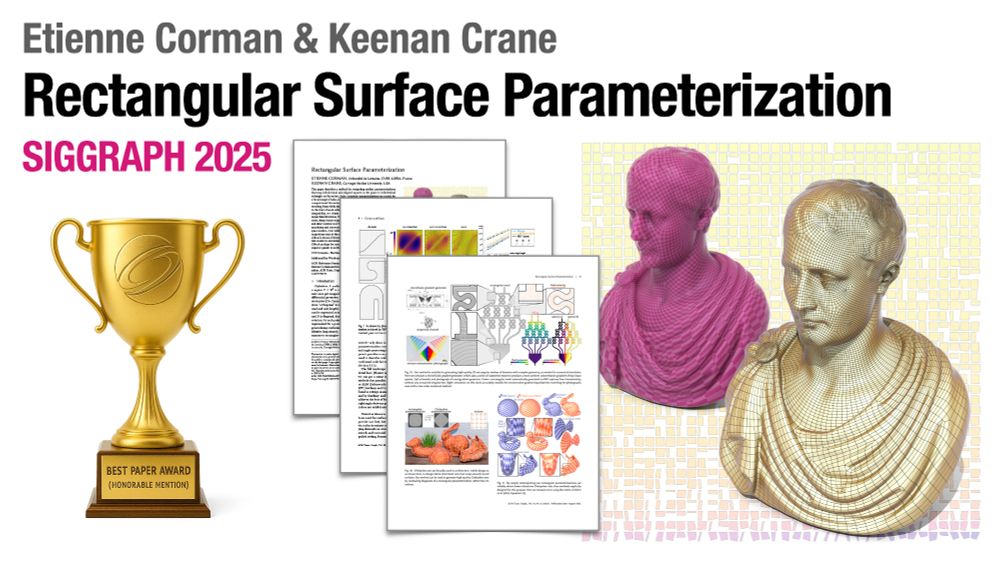
Such meshes are useful for everything from retopology, to microfluidic simulation, to textile design, to architectural geometry.
It didn’t really click until I was a dad: without parents, human civilization ends.
Only with good parents does the future look bright.
So, give a nod to anyone putting in the work.

It didn’t really click until I was a dad: without parents, human civilization ends.
Only with good parents does the future look bright.
So, give a nod to anyone putting in the work.
dl.acm.org/doi/10.1145/...
The implementation and the expansion-based arithmetic kernel are available in geogram: github.com/BrunoLevy/ge...
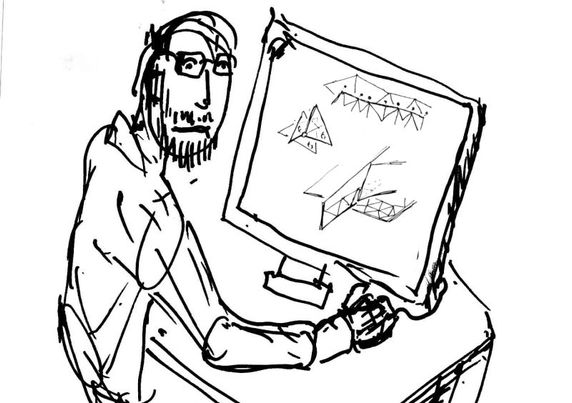
dl.acm.org/doi/10.1145/...
The implementation and the expansion-based arithmetic kernel are available in geogram: github.com/BrunoLevy/ge...

You can find the full paper and 3D printable STL files on Hossein's webpage here: hbaktash.github.io

You can find the full paper and 3D printable STL files on Hossein's webpage here: hbaktash.github.io
• www.newscientist.com/article/2482...
• hbaktash.github.io/files/rollin...
• www.newscientist.com/article/2482...
• hbaktash.github.io/files/rollin...
We've now put printable STL files online: www.cs.cmu.edu/~kmcrane/Pro...
More info here: hbaktash.github.io

We've now put printable STL files online: www.cs.cmu.edu/~kmcrane/Pro...
More info here: hbaktash.github.io
What if instead of two 6-sided dice, you could roll a single "funky-shaped" die that gives the same statistics (e.g, 7 is twice as likely as 4 or 10).
Or make fair dice in any shape—e.g., dragons rather than cubes?
That's exactly what we do! 1/n
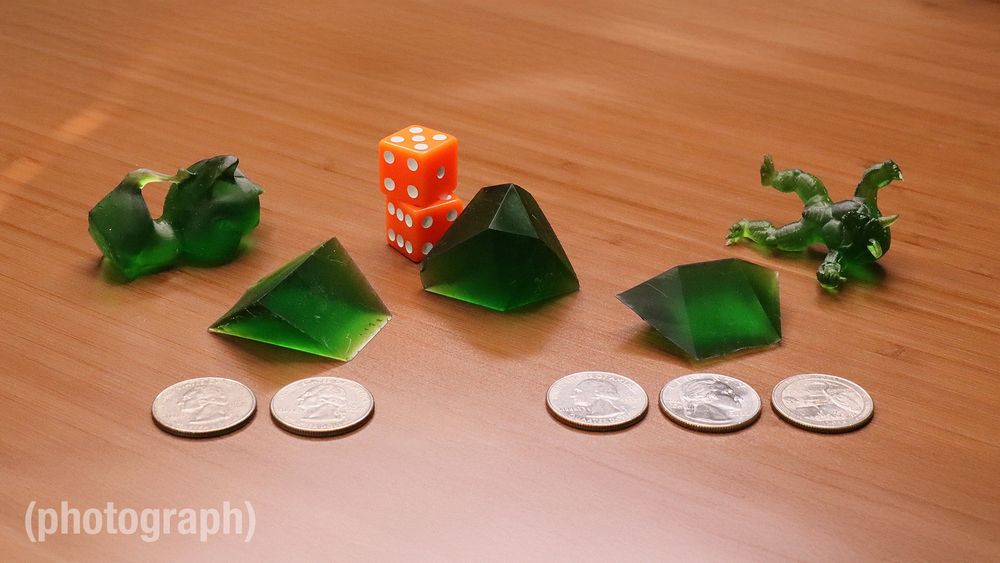
What if instead of two 6-sided dice, you could roll a single "funky-shaped" die that gives the same statistics (e.g, 7 is twice as likely as 4 or 10).
Or make fair dice in any shape—e.g., dragons rather than cubes?
That's exactly what we do! 1/n


